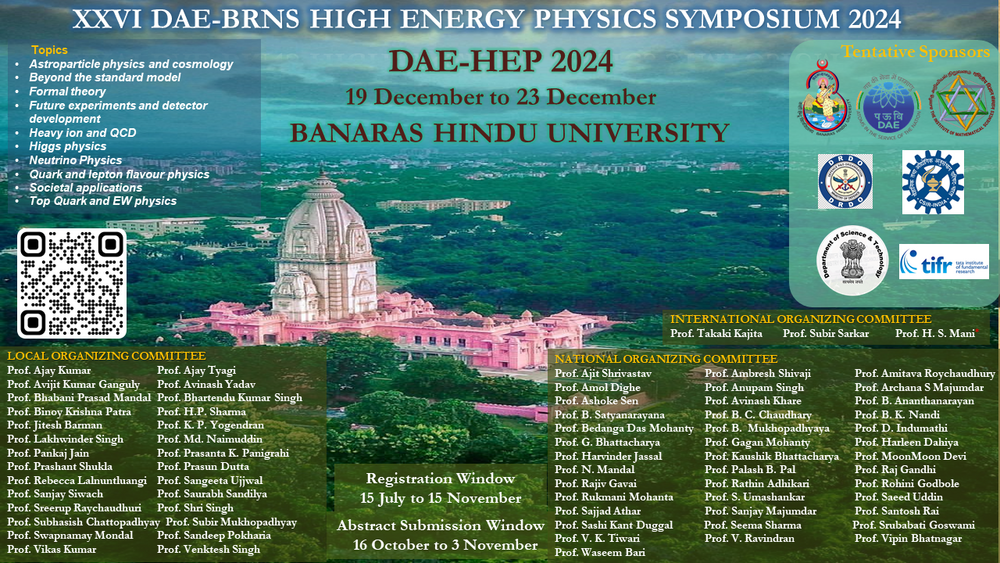Speaker
Description
In this study, we have constructed the inverse potentials for s-wave neutron-proton (n-p) elastic scattering in the 1S0 and 3S1 channels, utilizing a piecewise Morse function as the reference function within the phase equation framework. We have optimized the model parameters of the reference function by minimizing the mean absolute percentage error (MAPE) between the simulated and expected phase shifts within a machine learning paradigm. The phase shifts were calculated independently for two distinct energy ranges, up to 350 MeV and 1050 MeV, by solving the phase equation using a fifth-order Runge-Kutta (RK5) method. This approach enabled us to systematically construct the inverse potential, tailored specifically for each energy limit, allowing for detailed analysis of the energy-dependent characteristics of the n-p interaction. The constructed potentials for 1S0 and 3S1 state exhibit distinct profiles across the examined energy ranges. For the 350 MeV case, the potential displays a well-defined attraction at short distances, with a depth Vd =−101.67 MeV at a distance of rd= 0.88 fm, aligning with observed phase shifts at lower energies. In contrast, the potential constructed for 1050 MeV exhibits a more pronounced well depth of Vd = −114.56 MeV at rd=0.83 fm, indicating an increased attractive interaction with rising energy in the 1S0 state. For the 3S1 state, the potential depth is Vd=−107.83 MeV at rd=0.94 fm for energies up to 350 MeV, while for energies up to 1050 MeV, the depth increases to Vd=−136.31 MeV at a distance of rd=0.86 fm. This variation in the depth and shape of the potential well highlights the sensitivity of the interaction to higher energy scales, as the increased kinetic energy of the scattering particles requires a deeper potential to reproduce the observed phase behavior accurately. These findings not only suggest that the piecewise Morse function serves effectively as a reference in constructing accurate inverse potentials that capture the energy-dependent dynamics of s-wave n-p elastic scattering but also underscore the methodology's relevance to high-energy physics, where precise modeling of scattering interactions at energies up to the GeV scale is essential. The methodology and results thus provide a refined framework for modeling nuclear scattering potentials, enhancing our understanding of elastic scattering processes across a wide energy range, including those relevant to high-energy physics.
| Field of contribution | Theory |
|---|

